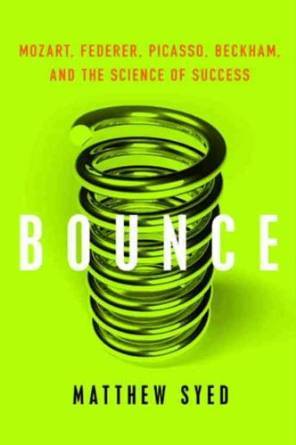More on this book
Community
Kindle Notes & Highlights
by
Matthew Syed
Read between
May 10 - May 30, 2023
says is not directed at truth but at sustaining a particular mind-set.
To discover a new placebo, all you need do is to invent it, and to invent it all you need do is change your beliefs. So it seems the way might well be open for everyone to take voluntary control….
Doublethink means the power of holding two contradictory beliefs in one’s mind simultaneously, and accepting both of them…. [T]o forget any fact that has become inconvenient, and then, when it becomes necessary again, to draw it back from oblivion for just so long as it is needed…all this is indispensably necessary.
Choking is surreal to observe because it often involves a world-class performer, someone who has spent a lifetime honing his skills and touch, suddenly looking like a novice.
This migration from the explicit to the implicit system of the brain has two crucial advantages. First, it enables the expert player to integrate the various parts of a complex skill into one fluent whole (this
“motor chunking” is akin to the perceptual chunking described in chapter 1), something that would be impossible at a conscious level because there are too many interconnecting variables for the conscious mind to handle. And second, it frees up attention to focus on higher-level aspects of the skill such as tactics and strategy.
We have seen that choking is a neural glitch that occurs when individuals are under pressure; when they find themselves explicitly monitoring skills that would be better executed automatically. We have also seen that this is a deeply confusing and often surreal experience
for the performer—unable to execute the smooth and refined actions he or she has spent a lifetime mastering.
The role played by top-down knowledge can be seen in the “plumbing” of perception: in the case of vision, there are more downward fibers from the cortex to the brain’s relay stations than there are bottom-up from the eyes. So when we look at, say, a face, there is more data traveling downward from the knowledge areas of our brains than traveling upward from our eyes. Perception is what happens when the two interact.
When Bradford looked at a face, he saw a blur. He had access to the same visual information as everyone else (the light entering his retina was identical, as was the retinal image), but he saw it differently because he lacked the knowledge—drawn from experience—to mold the sensory data into a meaningful form. Even after a few months, Bradford was unable to recognize people through vision alone, even when meeting them for the third or fourth time. Instead, he had to rely on acoustic information such as tone of voice.
This dramatic difference between experts and nonexperts can be most easily seen in the world of medicine. Clinicians with long experience are able to make better diagnoses from X-rays and mammograms than medical students. But this is not because they make more astute inferences from the pictures, but because they can actually see patterns and structure that are invisible to their less experienced colleagues.
We have seen that, according to Entine’s own data, distance running is not a “black” phenomenon, but an East African phenomenon focused on the nation of Kenya.
You will immediately notice that Kenya’s top runners are not evenly spread across the nation but are highly concentrated on one tiny area in the Rift Valley, in and around Eldoret. As Fred Hardy, a retired American college track coach, put it: “If one were to circumscribe a radius of sixty miles around the town of Eldoret, you would get about 90 percent of the top Kenyan athletes. Something special has happened here in the Nandi Hills.”
It is all too easy to assume that racial patterns of success and failure are grounded in genetics, but the point of this chapter is to suggest that subtler and more elusive forces are at work. The tendency to see black and white as genetic types (which, to a large extent, underpins racial stereotyping) has long been contradicted by the findings of population genetics. If we could only ditch our race-tinted spectacles, the world would not only look very different, it would soon become very different, too.


